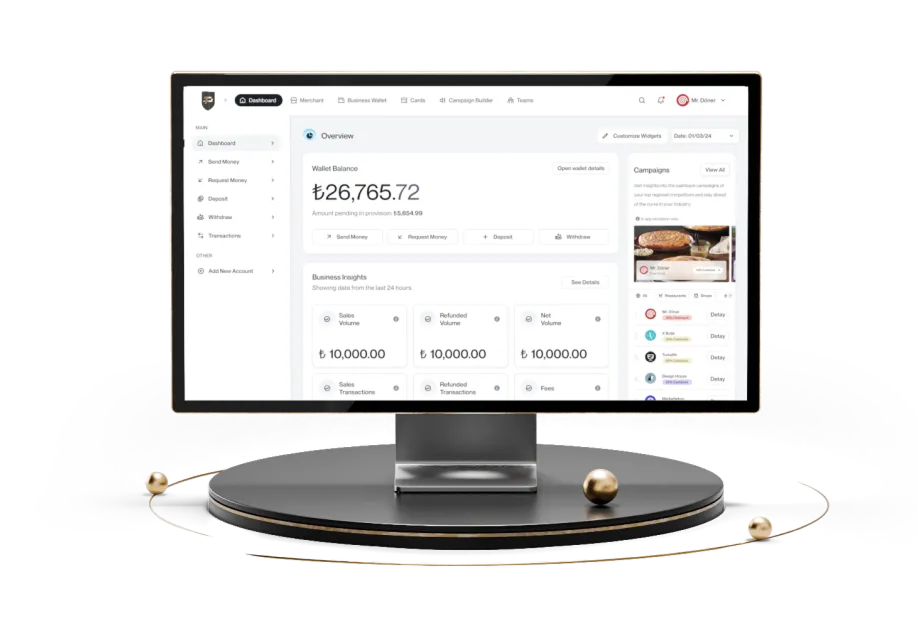Complete IPO Guide: Essential Information for Investors and Companies
An IPO (Initial Public Offering) is the process of offering a company's shares for public sale on a stock exchange for the first time. Companies may choose the IPO route for several reasons. Typically, companies go public to reduce debt, strengthen their capital structure, or finance their growth objectives by listing shares on a stock exchange.
Once a company's shares begin trading publicly, investors can buy and sell these shares. Going public offers companies the advantage of strengthening their corporate structure and expanding their capital base.
What Are Purposes of an IPO?
IPOs offer a range of benefits to companies and investors alike, serving multiple purposes:
- Capital Raising and Growth Financing
- Increasing Market Value and Visibility
- Offering Stock Options for Employee Motivation
- Expanding the Investor Base
- Providing Liquidity for Company Owners
- More Reliable Financing and Borrowing Conditions
- Strategic Planning and Long-Term Growth Objectives
Capital Raising and Growth Financing
One of the primary purposes of an IPO is to secure new capital. Capital is essential to fund company growth, strengthen the capital structure, and support the company's expansion. The funds generated by an IPO allow companies to invest in new projects and technologies to facilitate growth. Some companies also opt for IPOs to reduce debt, using the raised capital to ease their debt burdens.
Increasing Market Value and Visibility
Going public increases the company's visibility, raising its public profile and awareness. A stronger brand presence can attract potential customers and boost the company's reputation. Additionally, listing shares on the stock exchange provides investors with insight into the company's market value, which is useful for investors and stakeholders.
Offering Stock Options for Employee Motivation
If a company is public, it can offer stock options to its employees, increasing loyalty to the company. As employees contribute to company growth, the value of shares may also increase, providing a powerful incentive. Stock options can also attract talented professionals, enhancing the quality of the workforce.
Expanding the Investor Base
An IPO allows a company to broaden its shareholder base by attracting various groups of investors. A broad shareholder base composed of individual and institutional investors strengthens the company's liquidity and capital base. With a solid capital foundation, companies can pursue strategic partnerships, tap into new financing sources, and create new growth opportunities.
Providing Liquidity for Company Owners
IPOs enable existing shareholders to liquidate their shares. Especially for long-term investors, IPOs can increase the value of their holdings. Founders or early investors can also cash in on their shares after an IPO.
More Reliable Financing and Borrowing Conditions
Going public brings transparency, making the company more credible to lenders. Banks and other financial institutions view publicly traded companies as more creditworthy, allowing them to secure better-borrowing terms.
Strategic Planning and Long-Term Growth Objectives
Going public supports the company's corporate growth by creating a more robust financial structure to reach growth goals. Public companies maintain regular communication with their investors, fostering trust, which can help achieve growth objectives with long-term investor support.
IPO Process
An IPO, where a company publicly offers shares, is a multi-stage process that requires careful management at each step:
Decision and Planning for IPO
After deciding on an IPO, company management and shareholders define the IPO's purpose, objectives, and timing, whether for capital increase, growth, or debt reduction. A team of investment banks, advisors, and legal firms is chosen to manage the IPO.
Evaluation and Pricing
Investment banks and advisors assess the company's financial structure, market position, and growth potential. They then determine the company's total value and price range per share. Setting the right price is essential to attract investors while reflecting the company's true value.
Application to the Capital Markets Board (CMB) and Approval Process
In Turkey, the IPO process is regulated by the CMB. Companies submit a prospectus containing detailed financial position, operations, and management information. Once approved, the company is authorized for the IPO.
IPO Roadshow
Companies organize roadshows to inform investors and increase demand for their shares. Company leaders and advisors meet potential investors, presenting the company's growth strategies and financial projections. Roadshows, held domestically and internationally, help attract investor interest.
Collection of Bids
The collection period usually lasts 2–3 days, during which bids for shares are gathered based on a specified price range. This process sets the final IPO price based on investor demand.
Distribution of Shares and Start of Trading
After bids are collected, shares are allocated to investors and transferred to their accounts. The IPO shares begin trading on the stock exchange on a specified date, establishing the company as a publicly traded entity that must disclose financial reports.
Post-IPO Responsibilities
A public company must regularly disclose financial reports and comply with the CMB's regulations. This includes maintaining investor relations, upholding transparency, and publicly announcing major events such as significant projects and management changes.
What Are the Types of IPOs
IPOs vary by strategy and methods tailored to the company's needs, target investors, and CMB conditions:
- Primary IPO
- Secondary Offering
- Sale of Existing Shareholders' Shares
- Capital Increase with New Shares
- Free Capital Increase with Existing Resources
- Private Placement
- International IPO
Primary IPO
In a primary IPO, a company goes public for the first time, offering shares to investors. This process aims to secure capital, build a broad investor base, and increase brand awareness, typically attracting strong demand.
Secondary Offering
A secondary offering refers to reissuing previously public shares or issuing new shares. It may be pursued to increase capital or allow existing shareholders to sell their holdings. Secondary offerings can support growth strategies but may also affect share prices due to increased shares on the market.
Sale of Existing Shareholders' Shares
This type involves existing shareholders selling shares to new investors without issuing new shares, allowing them to monetize their investments. However, large sales by significant shareholders could negatively impact share prices.
Capital Increase with New Shares
This process involves issuing new shares to raise capital to reduce debt or fund growth projects. Companies may offer these shares to existing shareholders or directly to new investors.
Free Capital Increase with Existing Resources
In a free capital increase, companies issue additional shares to current shareholders without cost, boosting the share count and reinforcing the company's capital structure.
Private Placement
This type refers to selling shares directly to a select group of institutional or qualified investors, usually through private agreements rather than public exchanges.
International IPOs
In a international IPO, companies list their shares on international markets to reach global investors, attract foreign capital, and increase brand visibility. However, the process can be complex due to regulatory and cost differences across countries.
What are the Advantages of an IPO?
IPOs offer companies several benefits, primarily by increasing capital and strengthening their market position. The boost in liquidity reduces debt levels, and companies can also offer stock options to employees, expanding and diversifying their investor base. This investor base supports future capital-raising efforts and builds trust through enhanced transparency.
What Are the Disadvantages of an IPO?
While IPOs bring significant advantages, they also come with challenges. Companies must manage high costs, rigorous regulations, and transparency requirements, which may affect competitiveness. Additionally, public companies may struggle with short-term profit expectations, lose control due to increasing shareholders, and be more susceptible to market fluctuations. Therefore, considering potential risks and disadvantages is crucial before deciding on an IPO.




